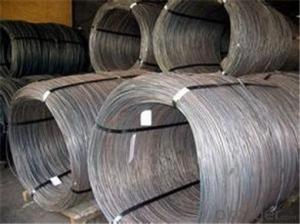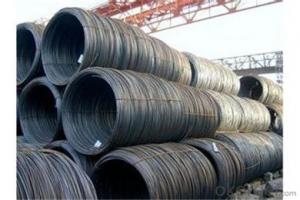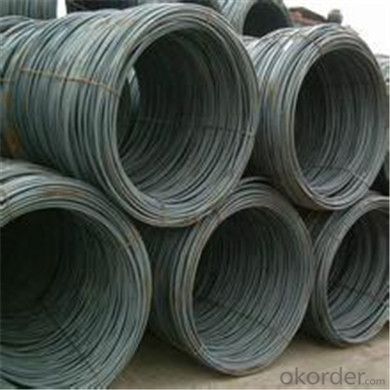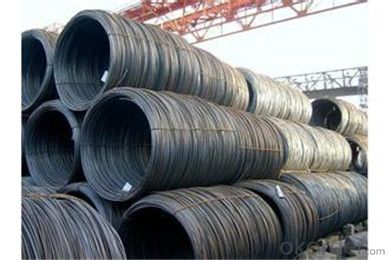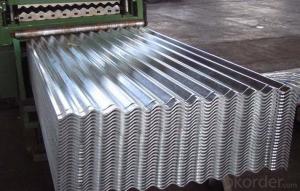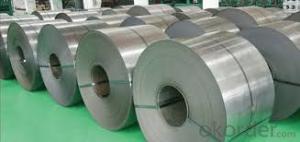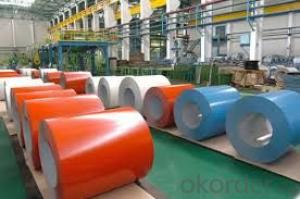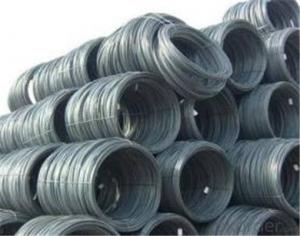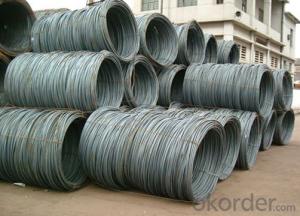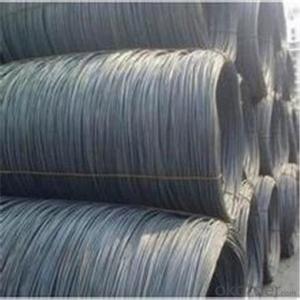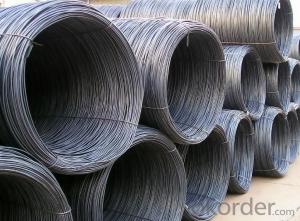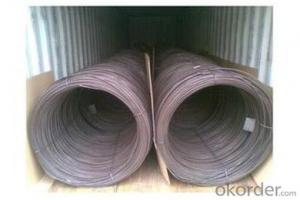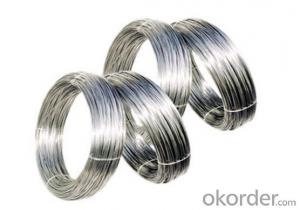SAE1008B Steel Wire rod 5.5mm with Best Quality
- Loading Port:
- Shanghai
- Payment Terms:
- TT OR LC
- Min Order Qty:
- 50 m.t.
- Supply Capability:
- 4000000 m.t./month
OKorder Service Pledge
OKorder Financial Service
You Might Also Like
Specification
Description of wire Rod:
wire rod:
Grade:SAE1006B/SAE1008B/SAE1018B
Size:5.5/6.5/7/8/9/10/11/12mm
Festures of wire Rod:
fasteners, bolts, rivets, screws,
general purpose wires,
electrode wires, industrial wires, agriculture wires,
bush wires, chain rivet wires,
detonator wire,
Umbrella ribs, upholstery wires, cycle spokes, needle wires, heald wires, staple pin Wire, safety pin wires
ACSR wires, earth wires,
tyre and hose reinforcement wires,
Specifications of wire Rod:
Grade | Chemical Composition(%) | |||||
C | Mn | Si | S | P | Cr | |
SAE1006B | 0.03~O.07 | ≤0.32 | ≤0.30 | ≤0.045 | ≤0.040 | 0.3-0.35 |
Mechanical properties | ||||||
Yield strength(N/mm2) | Tensile strength(N/mm2) | Elongation(%) | ||||
250-280 | 350-380 | ≥32 | ||||
Grade | Chemical Composition(%) | |||||
C | Mn | Si | S | P | Cr | |
SAE1008B | 0.10max | 0.3~O.50 | 0.15max | 0.050max | 0.040 max | 0.3-0.35 |
Mechanical properties | ||||||
Yield strength(N/mm2) | Tensile strength(N/mm2) | Elongation(%) | ||||
≥195 | 315-430 | ≥30 | ||||
Images of wire Rod:
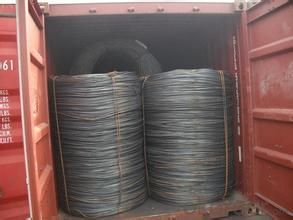
FAQ:
1. What is your package?
Packing situation: standard seaworthy packing or as customer required.
2. How long is the lead time?
Delivery time: 45 days after order confirmed.
3. What payment term do you accept?
Payment: T/T or L/C at sight.
- Q: Can steel sheets be used for insulation purposes?
- No, steel sheets are not typically used for insulation purposes as they are conductive and do not provide effective thermal insulation.
- Q: What is the process of hot-dipping steel sheets?
- The process of hot-dipping steel sheets involves immersing them into a bath of molten zinc, resulting in a protective zinc coating on the surface of the steel. This process helps to prevent corrosion and increase the durability of the steel sheets.
- Q: What is the typical hardness range for steel sheets?
- The hardness range of steel sheets varies depending on the specific grade and type of steel employed. Generally, steel sheets exhibit a hardness range of 150 to 250 on the Vickers hardness scale (HV), striking a favorable balance between strength and formability. This characteristic renders steel sheets appropriate for a diverse array of applications. It is worth emphasizing that the hardness can be further modified through different heat treatment methods to attain desired properties.
- Q: Are steel sheets suitable for elevator shafts or cabin interiors?
- Steel sheets are suitable for both elevator shafts and cabin interiors. They are widely used in the construction industry because of their strength, durability, and versatility. Elevator shafts commonly utilize steel sheets due to their ability to withstand heavy loads and provide structural support. Additionally, they offer excellent fire resistance and can endure extreme temperatures, ensuring a safe environment. Regarding cabin interiors, steel sheets provide numerous advantages. They can be easily shaped and sized to allow for customization and design flexibility. Moreover, steel sheets can be painted or coated, resulting in a smooth and visually appealing finish. They are highly resistant to wear and tear, guaranteeing long-lasting durability in high-traffic areas such as elevator cabins. Furthermore, steel sheets possess soundproofing properties, which are essential for creating a comfortable and quiet experience for passengers in elevator cabins. Additionally, they resist moisture and corrosion, making them suitable for elevator cabins located in humid or coastal regions. In conclusion, steel sheets are an exceptional choice for elevator shafts and cabin interiors due to their strength, durability, versatility, fire resistance, soundproofing capabilities, and resistance to moisture and corrosion.
- Q: Can the steel sheets be used for industrial machinery?
- Yes, steel sheets can be used for industrial machinery as they are strong, durable, and have excellent load-bearing capabilities, making them suitable for various applications in the industrial sector.
- Q: What is the difference between a smooth and embossed steel sheet?
- A smooth steel sheet has a flat and even surface, while an embossed steel sheet has a textured or raised pattern on its surface.
- Q: Are steel sheets suitable for bridge construction?
- Yes, steel sheets are suitable for bridge construction. Steel is a strong and durable material that can withstand heavy loads and provide structural stability to bridges. It offers various advantages such as high strength-to-weight ratio, flexibility in design, and resistance to corrosion. These qualities make steel sheets an ideal choice for constructing bridges, ensuring their long-term reliability and safety.
- Q: Can steel sheets be used for solar panel installations?
- Yes, steel sheets can be used for solar panel installations, particularly as a mounting structure or frame for the panels. Steel provides strength, durability, and stability, making it an ideal material for supporting solar panels and ensuring their long-term performance.
- Q: Can steel sheets be cut to custom sizes?
- Yes, steel sheets can be cut to custom sizes.
- Q: What is the average wind load capacity of steel sheets?
- The average wind load capacity of steel sheets can vary depending on various factors such as the thickness of the sheet, the type of steel used, and the specific design and installation of the structure. However, steel sheets are known for their high strength and durability, making them capable of withstanding significant wind loads. Typically, steel sheets used for roofing or cladding applications are designed to meet specific wind load requirements based on regional building codes and standards. These standards take into account factors such as the geographical location, building height, exposure category, and wind speed. To determine the wind load capacity of steel sheets, engineers and architects use calculations and simulations to analyze the forces exerted by the wind on the structure. They consider factors such as wind pressure, building orientation, surface area, and the shape and profile of the steel sheets. In summary, the average wind load capacity of steel sheets cannot be generalized as it varies based on several factors. It is crucial to consult with a structural engineer or building professional to determine the appropriate wind load capacity requirements for a specific steel sheet application.
Send your message to us
SAE1008B Steel Wire rod 5.5mm with Best Quality
- Loading Port:
- Shanghai
- Payment Terms:
- TT OR LC
- Min Order Qty:
- 50 m.t.
- Supply Capability:
- 4000000 m.t./month
OKorder Service Pledge
OKorder Financial Service
Similar products
Hot products
Hot Searches
Related keywords

